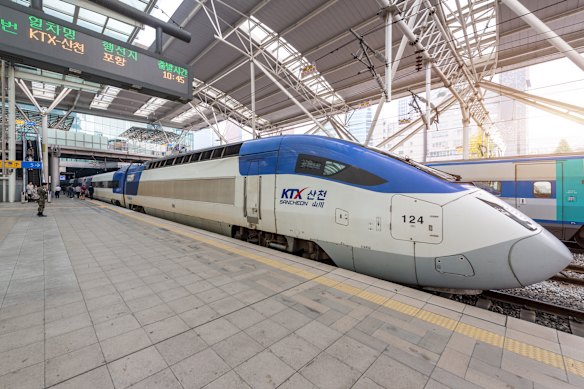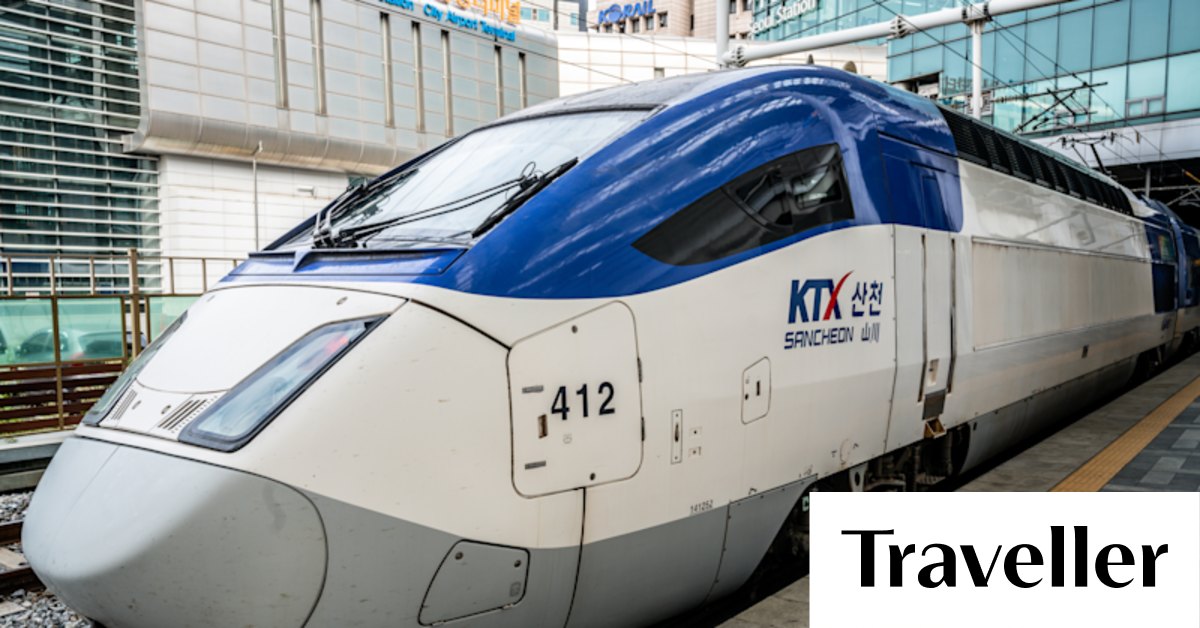There’s no weight limit on baggage, but you must be able to carry it yourself, you’re not allowed more than two items and you aren’t allowed to place them on a seat. For smaller items, there are racks above the seats in the carriage and storage shelves for larger bags at the end of the carriage. Despite the rule about lifting your own bags, a white-jacketed attendant shows no hesitation when an elderly passenger asks him to get her bag down from the rack.

A high-speed Korail train at the station in Seoul.Credit: iStock
Food + drink
There’s no dining car nor food trolleys, just a vending machine with a small selection of snacks and drinks. First-class passengers get a couple of biscuits and a packet of nuts, but if you’re in economy you’ll need to bring your own or eat at the station beforehand.
Loading
South Korea has had bullet trains for just over 20 years, with the original designs based on the French TGV. Since then the number of high-speed lines has continued to expand, but one proposed line remains controversial – a rail connection from the mainland to Jeju Island, via underwater tunnel, has been under consideration for more than 10 years but the project has stalled. One reason for the original idea is the popularity of the destination: the busiest air route in the world is Seoul-Jeju.
The verdict
This is everything a bullet train journey should be – a fast way to connect two major centres, offering passengers comfort and a huge number of services at a reasonable price. The only thing lacking is on-board dining, but it’s still the type of experience we can only dream of in Australia.
